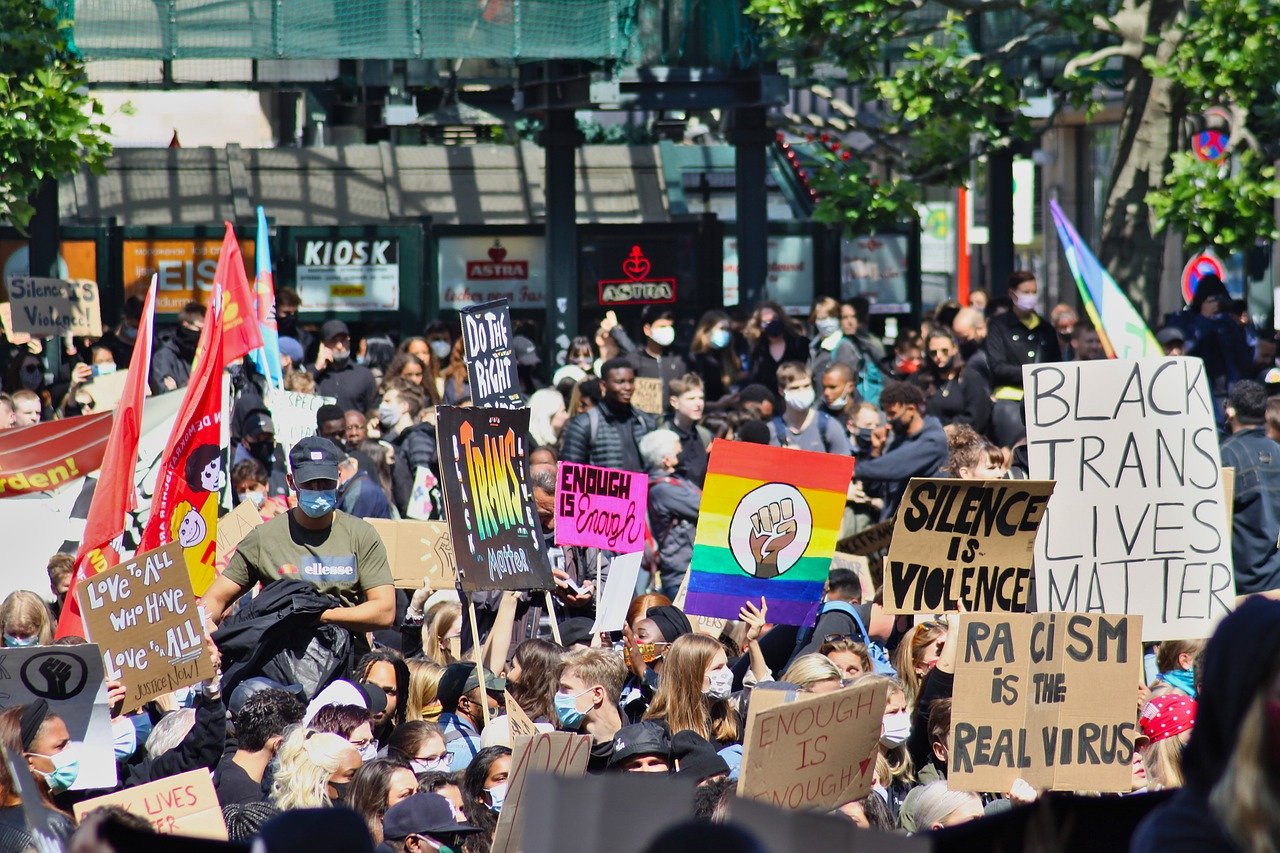

Wear a mask. Stay hydrated. Use an encrypted messaging app.
Sounds simple right? Whether you’re out protesting for Breonna Taylor, George Floyd, Tony McDade, or the hundreds of other Black Americans who’ve died from systemic racism in health care, community policing, and more, key precautions like these will keep you safe and strong as you march down the streets.
For the past few weeks at PopSci, we’ve been talking to experts and diving into available research to get you information that could protect you from crowd-control weapons, digital surveillance, and of course, COVID-19. Read the links in this quick rundown as you prepare for your next outdoor demonstration, and check back for more in coming days.
A guide to protesting during a pandemic
It’s impossible to be completely safe from infection. But being careful and prepared will allow you to freely exercise your First Amendment rights in the safest way possible, while also protecting your community from the novel coronavirus. Read more here.>>>
Essential first aid tips for protestors
At the end of the day, the best way to stay safe at a protest is to pay attention to your surroundings and keep your wits about you. Being prepared for danger, however unlikely it is, will help you stay cool under pressure. Read more here.>>>
Now is the time to switch to an encrypted communication app
It won’t cost you anything—except for maybe using funny stickers during your conversations—and it could prove extremely valuable down the road as it shields you from snooping advertisers or increasingly blurry restrictions on government investigations. Read more here. >>>
You should blur the faces in your protest photos. Here’s how.
Any photojournalist or news shooter will tell you, putting images into the world comes with great responsibility. There’s a ton of information in every photo and video you share, some of which you might not even be aware of. Read more here. >>>
How to protect yourself from rubber bullets—and why these “non-lethal” weapons are so dangerous
The weapons, which are projectiles coated in rubber about 2.5 cm in length, are shot from standard firearms or specialized riot guns. Originally, the bullets were designed to be shot at peoples’ lower bodies in order to disperse violent crowds—in other words, alternative, safer ammunition to keep someone at bay without lethally injuring them. Read more here. >>>
What to do if you’re exposed to tear gas
When you’re exposed to tear gas, your eyes sting, your vision blurs, and you cry and blink uncontrollably. It gets worse the longer you’re in the gas: After a few seconds, you won’t be able to see, which will disorient and confuse you, potentially to the point of emotional and psychological distress. Read more here. >>>
How to handle a pepper spray attack
If you ever get sprayed, first find help from somebody who can be your eyes and then immediately move somewhere safe where you can wash your face. Afterward, stay in an open space and wait it out—the air will help you recover. Read more here. >>>
How to make the best protest sign
Bigger is better, of course. Bold letters and ample surface area are key. Then there’s carrying it. At marches in DC, sticks are forbidden for safety reasons. Read more here. >>>
Head over to our Instagram for easy-to-share resources, like the one below.